It’s November, and the first of the bull Elephant Seals should be starting to arrive any day now, ready to stake out their territories on select beaches of the California Coast. They will be vying for choice real-estate, that they might be ready when the females role into town for breeding and pupping. I’ve shown a slight profile of the bull Elephant Seals, discussing a photo or two. I’ve even given all of you a way too cute photo of one of their pups. Today however, I wanted to share with you some of my photos of the females with their pups.
I did however think it would also be fitting (and in the best interest of anyone that thought to wander too closely to a colony) to show the other side of this mother love- the ferociousness with which the females will defend those pups.
They seem calm and peaceful, nuzzling with their pup. Another female moves a little, adjusting herself, and sometimes it is fine. Others it erupts into a yelling, displaying, and sometimes some serious physical contact.
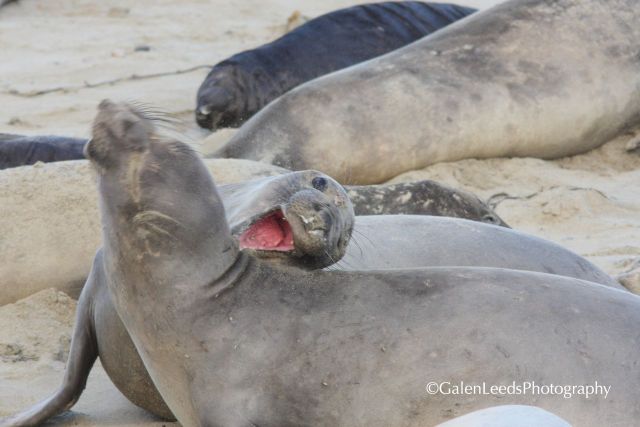
The males get all the fanfare for their big territorial battles, but the females can be rather violent themselves
These cows are not always placid, and it is understandable. These are very large animals when adults, and the pups are rather small. It would be easy for such a large creature to accidentally injure another cow’s pups, or even to smother it. Protection of one’s pup is key to survival.
THe bouts of violence among the females however, are generally fairly brief and do not escalate to the level of the males. Most of the time it is a much calmer, more intimate series of moments between cow and pup.
And now for the more general natural history on Elephant Seals…
The breeding season for northern elephant seals begins in early winter and extends to early spring, with adults spending the entire cycle—up to three months for males, one month for female— on shore living off their blubber. Starting around November or December, males arrive and begin to vie for dominance. Heaving around bulks of up to 5,000 pounds and “trumpeting” with the help of sounding chambers in their gigantic noses, they engage in what can be bloody and brutal battle. A dominant “alpha” bull will lay claim to an area where the females will gather.
In December and January, pregnant females arrive. They occupy chosen areas above the high tides, in groups of up to several dozen with an “alpha” bull in their midst (second-rank bulls may hold forth on the perimeters). Each female gives birth to a single pup, then protects it for four weeks and transfers 200 to 300 pounds of body weight to her offspring through rich, fatty milk. When the time nears for the young to wean, the female breeds again in order to bear another pup a year later.
Throughout this seasonal cycle, there are scientists observing the colony. (The post with the Elephant seals and the scientists help give a sense of the scale of these large marine mammals.) They record all the meaningful dates, count the adults and young, and tag the year’s pups as they are weaned. With special permission to approach these federally protected marine mammals, and with specialized skills and sensitivity, biologists
place tags in some of the seals’ flippers, scarcely bothering the animals. Monitoring known individuals in this way yields highly valuable scientific information: how many seals born here will return in subsequent years, which ones move to other colonies, and in some cases where they may show up throughout the North Pacific.
While it is marvelous to watch all the seals’ activity, park visitors must take care to avoid harm—to the seals and to themselves! Not only is it against federal law to disturb marine mammals, it can be dangerous for people and their pets to approach them. While it’s hard to imagine such big hulking creatures posing much of a problem on land, they actually move very quickly over short distances. Unlike other marine mammals that retreat into the water when approached, elephant seal bulls will chase and bite to defend their territory, and females likewise defend their pups.
They won’t always stand their ground though, and therein lies part of the danger to the rest of the seals in the colony. If a bull is displaced from his territory, he will then displace the next weaker male, who will then displace the next in the hierarchy, and this will continue until the numerous younger males are chased all around the beach. The results of such disturbance can be pitched battles between males, as well as chaos in the colony.
Another danger in this scenario is that a pup might become abandoned by its mother as adults flee, or crushed by fighting males. If adults are disturbed too much, they may not return to the same place in following years. People are asked not to approach any seal on the beach too closely and to mind seasonal beach closure signs.

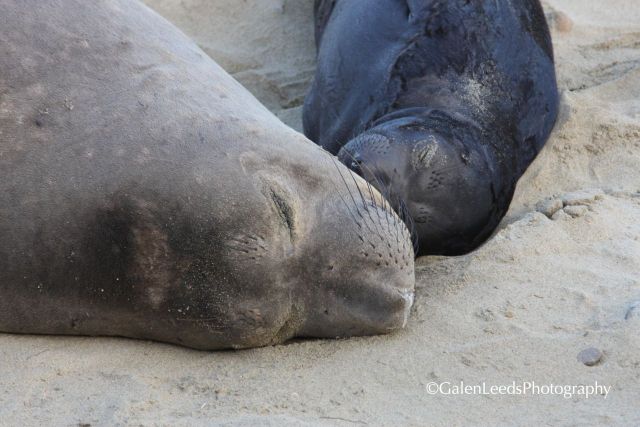
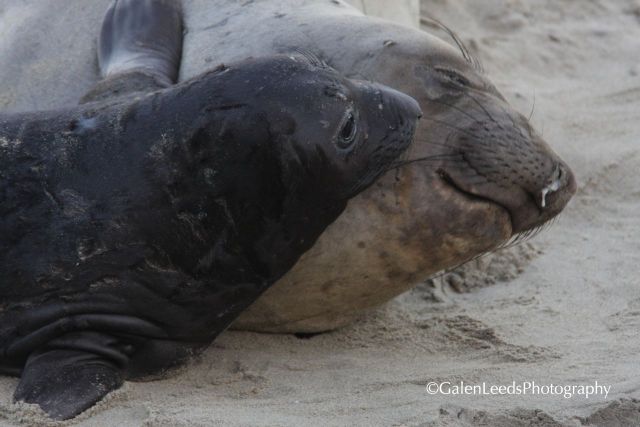
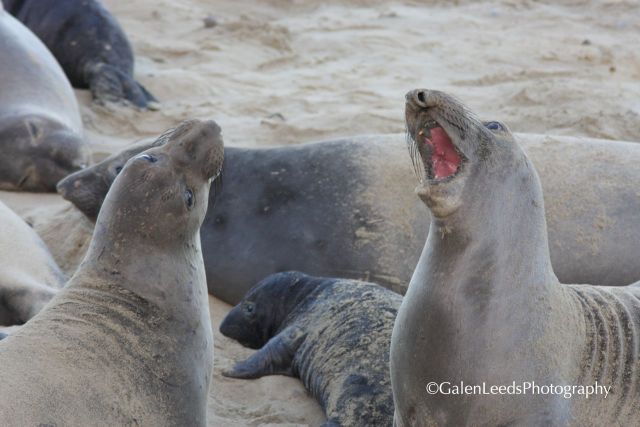
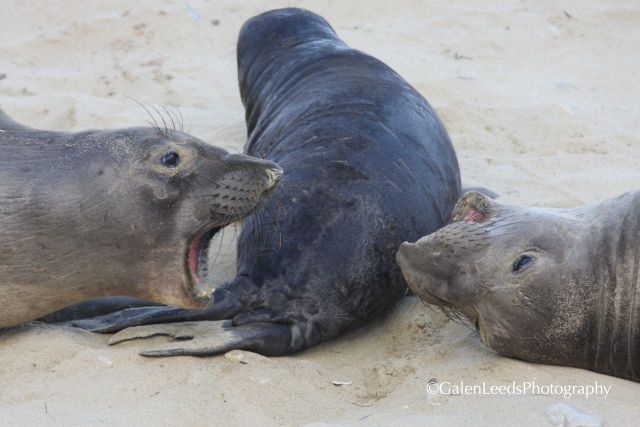
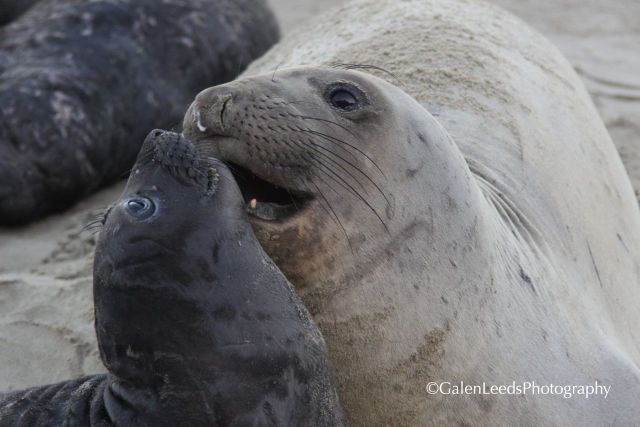

I appreciated this information as much as the photos!
Great info and delightful pictures; it’s good to see all sides of their behavior. I saw an elephant seal for the first time when we were in Alaska in Sept — they are huge! Thanks for sharing all about them.
I also appreciated the info and followed the link for more. The images are quite lovely.
These are awesome; I especially like the mother and child nuzzling!
Great post. These animals are massive. Great shots, I love the ones of the moms yelling at each other, made me think of the times I spent at the hockey arena ( human moms get defensive too.)
Wonderful, Galen, both the photos and the post. x